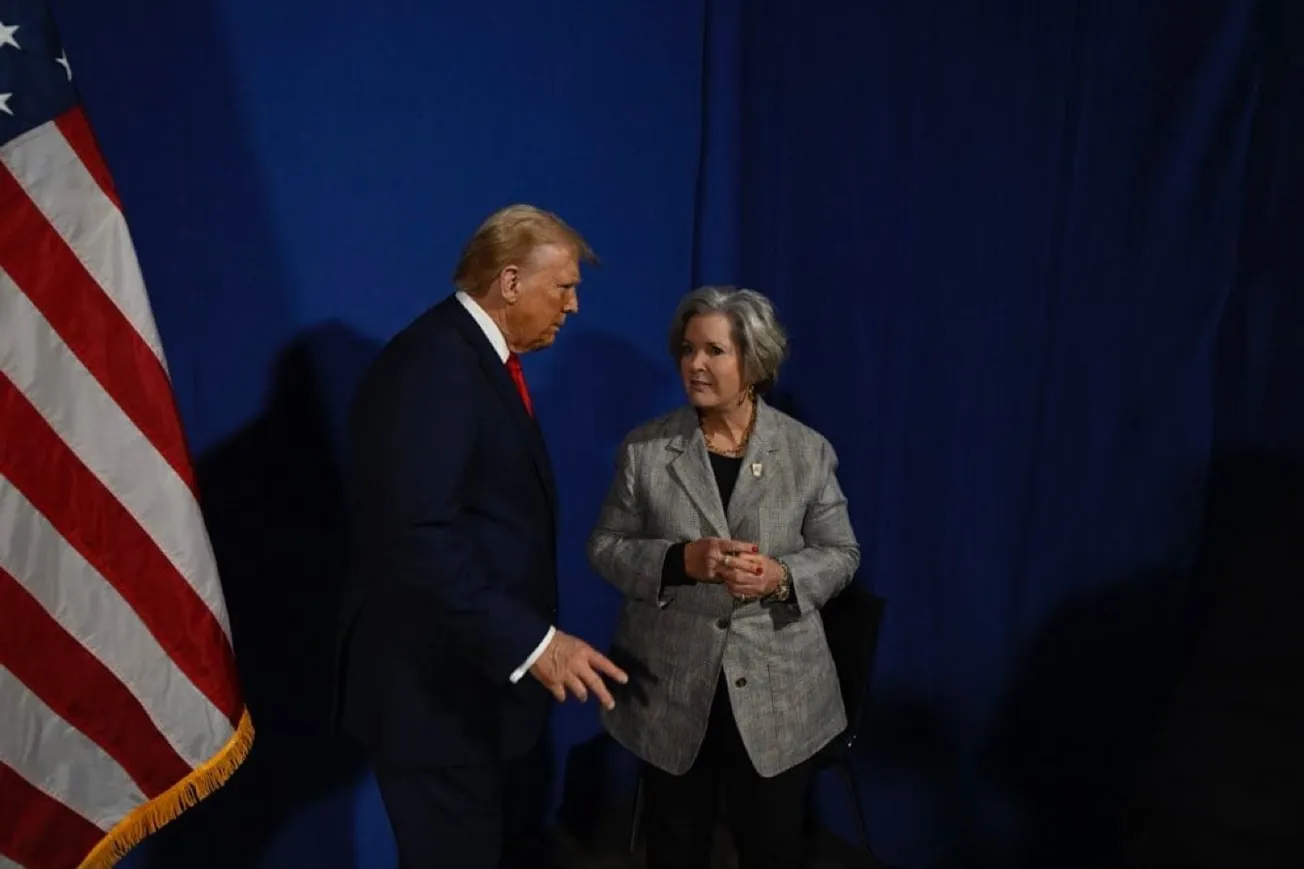The RealClearMarkets/TIPP Economic Optimism Index, a leading gauge of consumer sentiment, rose by 13.4% in November to 53.2, reaching its highest level since August 2021 (previous high: 53.6). The Index had been in negative territory for 38 consecutive months, starting in September 2021, and broke out decisively in November after Donald Trump's historic return as the 47th President. November’s reading of 53.2 is 8.3% higher than its historical average 49.1.
The RCM/TIPP Economic Optimism Index is the first monthly measure of consumer confidence. It has established a strong track record of foreshadowing the confidence indicators issued later each month by the University of Michigan and The Conference Board. (From February 2001 to October 2023, TIPP released this Index monthly in collaboration with its former sponsor and media partner, Investor's Business Daily.)
RCM/TIPP surveyed 1,436 adults for the November Index from November 7 to November 8, after it was confirmed that Donald Trump was elected to become the 47th President. The online survey utilized TIPP's network of panels to obtain the sample. A more detailed methodology is available here.
RCM/TIPP Economic Optimism Index
The RCM/TIPP Economic Optimism Index has three key components. In November, all three components improved.
- The Six-Month Economic Outlook, which measures how consumers perceive the economy's prospects in the next six months, improved from 47.3 in October to 55.9 (an 18.2% gain) in November, breaking into positive territory for the first time in 39 months . This component had remained below 50.0 (pessimistic territory) from September 2021 to October 2024. In October 2023, it posted a reading of 28.7, its lowest since the Index debuted in February 2001.
- The Personal Financial Outlook, a measure of how Americans feel about their own finances in the next six months, increased by 13.8% from its previous reading of 53.6 in October to 61.0 this month. Coincidentally, November’s reading is the highest since March 2020 (61.2), the month the pandemic hit the U.S., signaling the expectations of a strong economy under the new president.
- Confidence in Federal Economic Policies, a proprietary RCM/TIPP measure of views on the effectiveness of government economic policies, increased from 39.7 in October to 42.7 this month, reflecting a 7.6% gain. This component has been below 50.0 in the pessimistic territory for 39 consecutive months since September 2021.
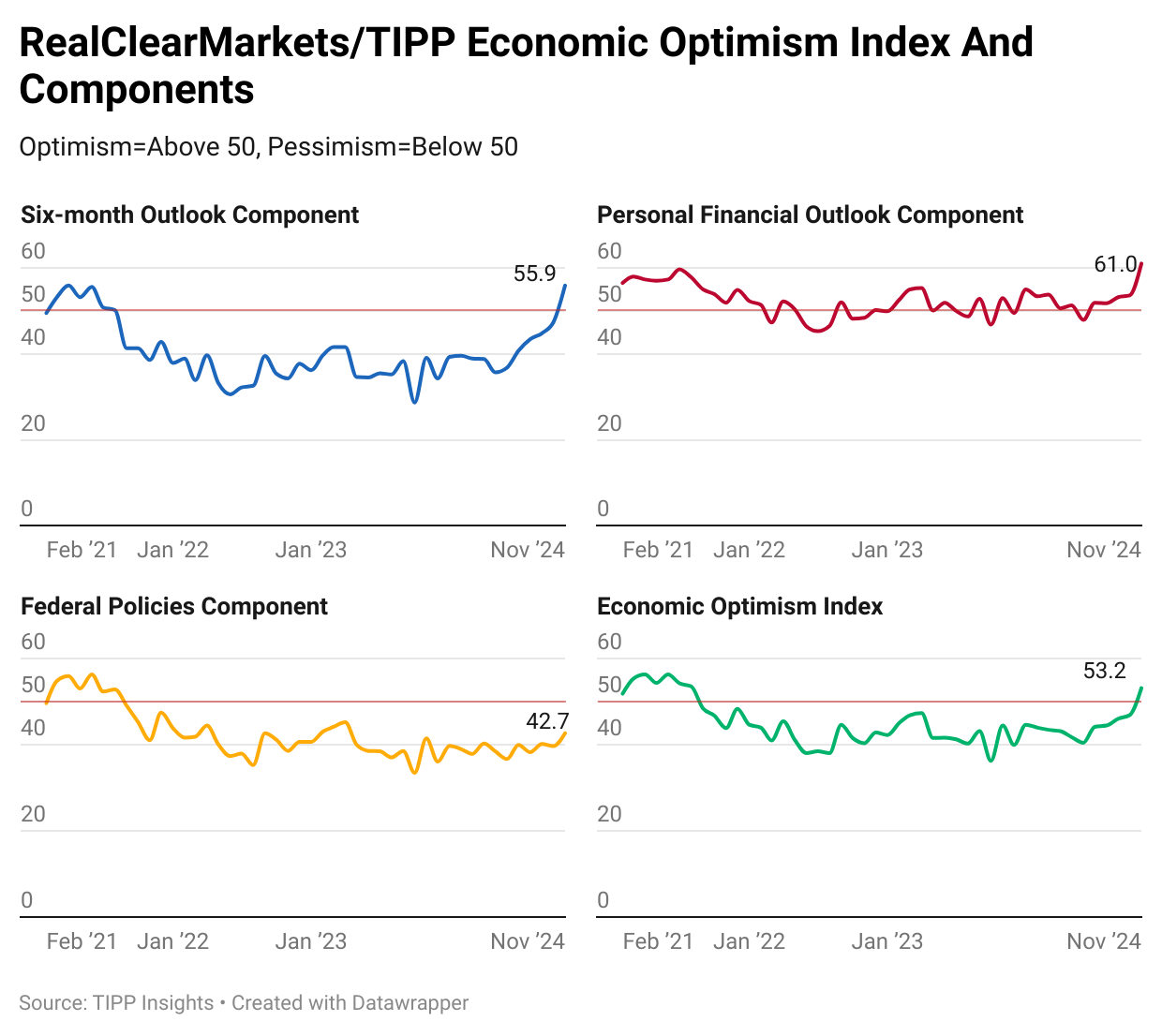
Party Dynamics
With Donald Trump's election as the 47th President, Democrats' confidence tumbled from 62.9 in October to 43.2 in November, a significant drop of 19.7 points or 31%.
Meanwhile, Republicans' confidence surged 29.9 points to 64.7 this month, an 86% increase. Since the 2020 presidential election, confidence in the economy had remained in the pessimistic zone for 48 consecutive months.
Independent voters' confidence has remained in pessimistic territory for 56 months, beginning in April 2020, shortly after the onset of the pandemic. In November, independents' confidence rose by 8.6 points, or 20%, reaching 51.3 on the Index — their first positive reading in nearly five years.
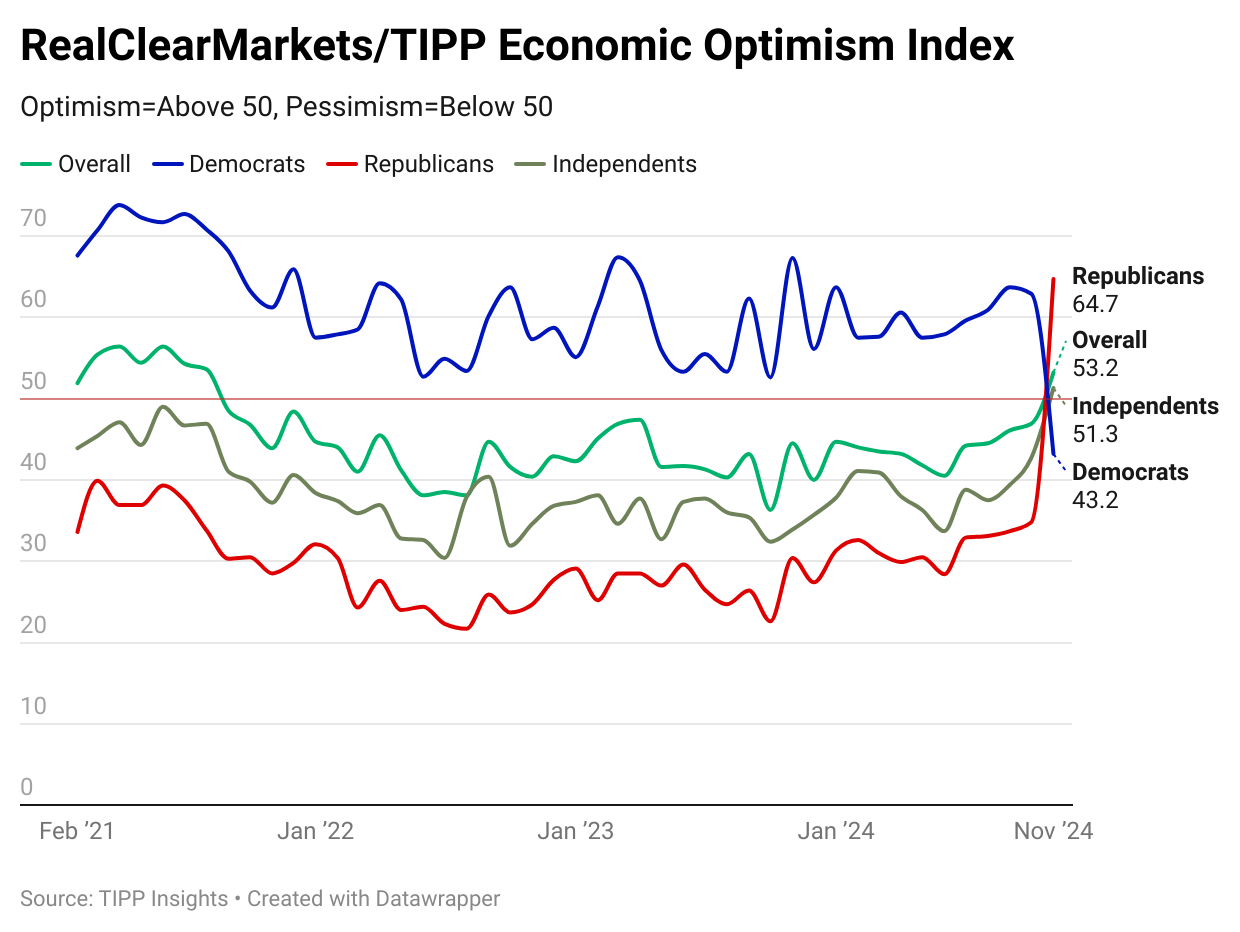
Investor Confidence
Respondents are considered "investors" if they currently have at least $10,000 invested in the stock market, either personally or jointly with a spouse, either directly or through a retirement plan. Thirty percent of respondents met this criterion, and 64% were classified as non-investors. We could not ascertain the status of six percent of respondents.
Investor optimism rose by 3.4%, climbing from 55.9 in October to 57.8 in November, while non-investors saw a bigger increase of 19.4%, from 42.3 to 50.5. The economic optimism gap between investors and non-investors narrowed to 7.3 points in November, down from 13.6 in October, 10.4 in September, and 11.7 in August.
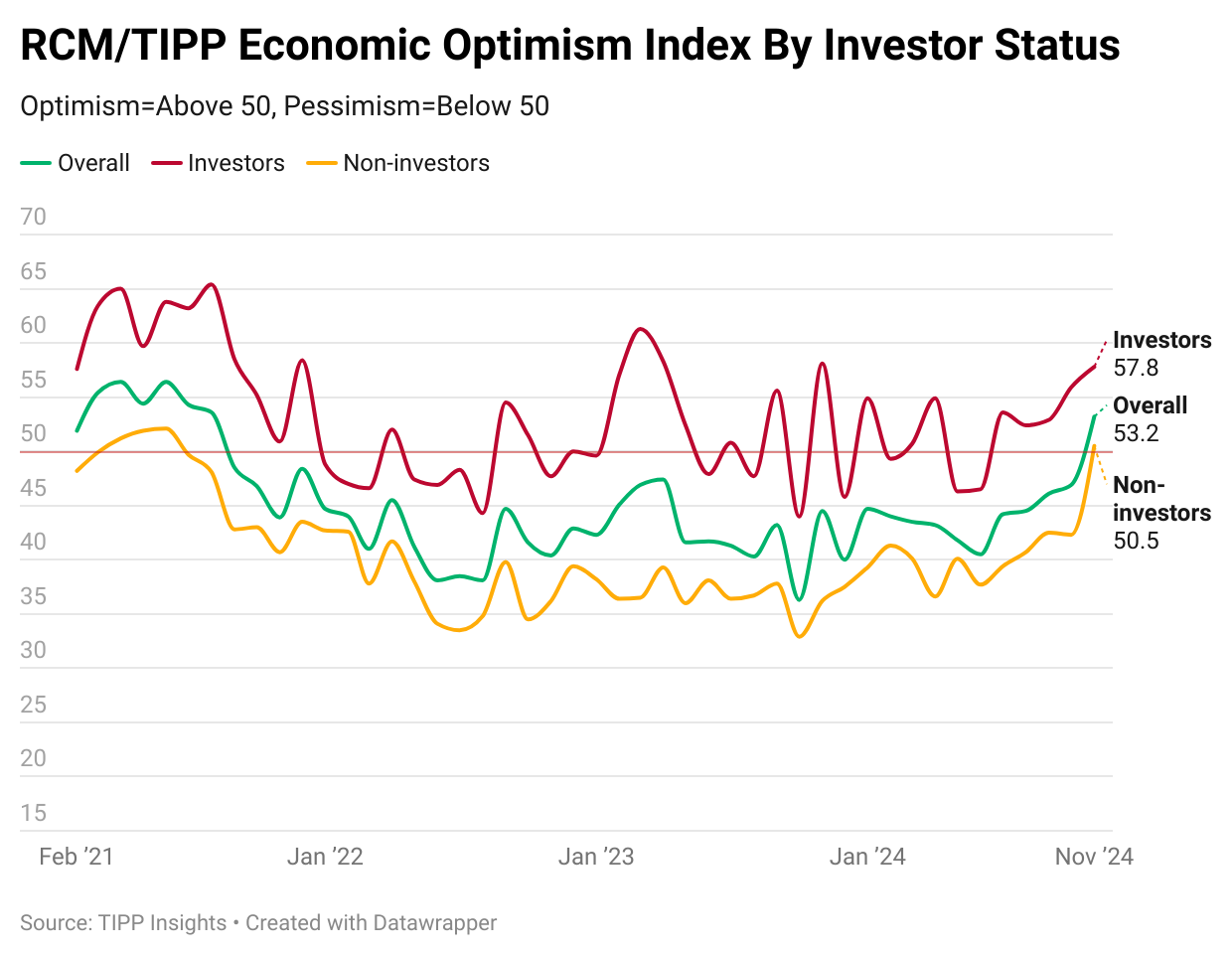
Momentum
Comparing a measure's short-term average to its long-term average is one way to detect its underlying momentum. For example, if the 3-month average is higher than the 6-month average, the indicator is bullish. If the 6-month average exceeds the 12-month average, the same holds.
In November, the Economic Optimism Index and its three components are higher or the same as their respective three-month moving averages, indicating a positive trend. Notice the stair-step pattern confirming the trend.

Demographic Analysis
The number of groups in the positive zone indicates the breadth of optimism in American society. This month, demographic groups in the optimism zone jumped from eight in October to 18, indicating widespread optimism. The three pessimistic groups are those aged 65+ (48.7), Females (49.4), and Democrats (43.2).
The number of groups in the positive zone oscillated between two and five in 2024. Only three groups were in the positive zone in August, increasing to seven in September and eight in October.
Eighteen groups improved on the index, compared to 14 in October, 17 in September, and 12 in August.
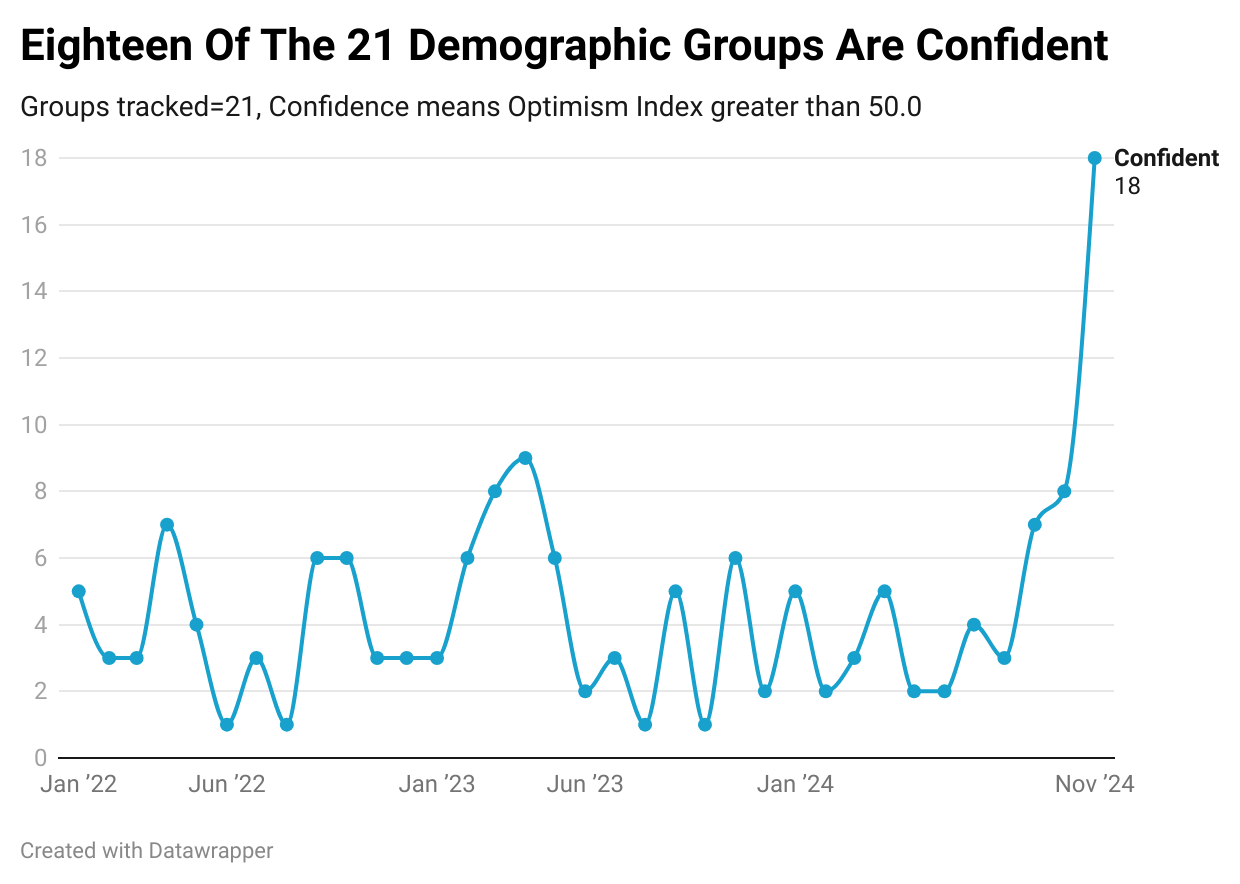
Economic optimism levels for 19 of 21 demographic groups are higher in November 2024 than the historical average of the past 286 months.
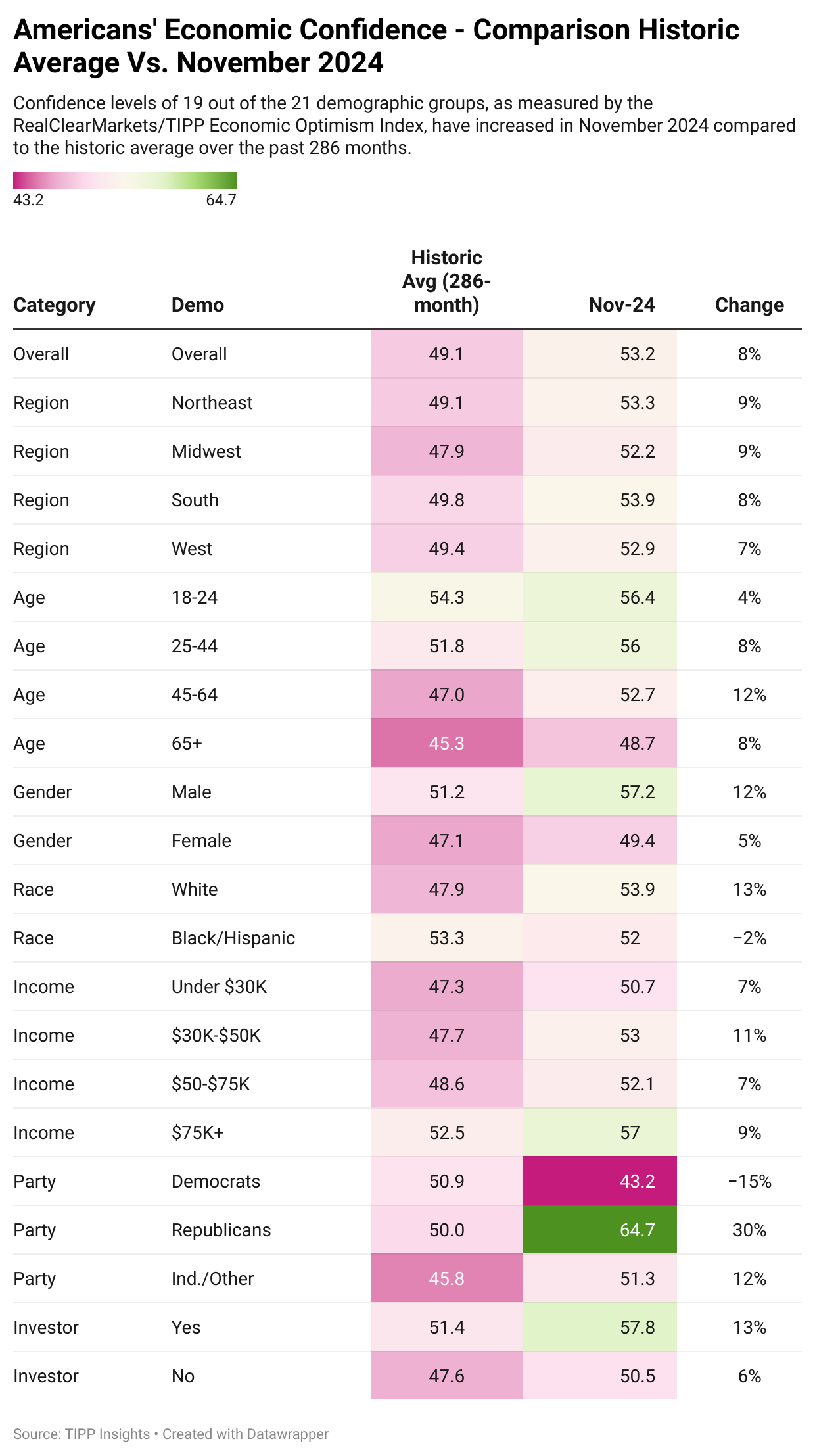
Inflation
The survey showed that 79% are worried about inflation. One-half (45%) are very concerned, and another 34% are somewhat concerned.
Americans continue to suffer because real wages have not increased, despite the CPI rate falling from a 40-year high of 9.1% in June 2022 to 2.6% in October 2024.
The Federal Reserve believes that long-run inflation of 2%, measured by the annual change in the price index for personal consumption expenditures, is most consistent with its maximum employment and price stability mandate.
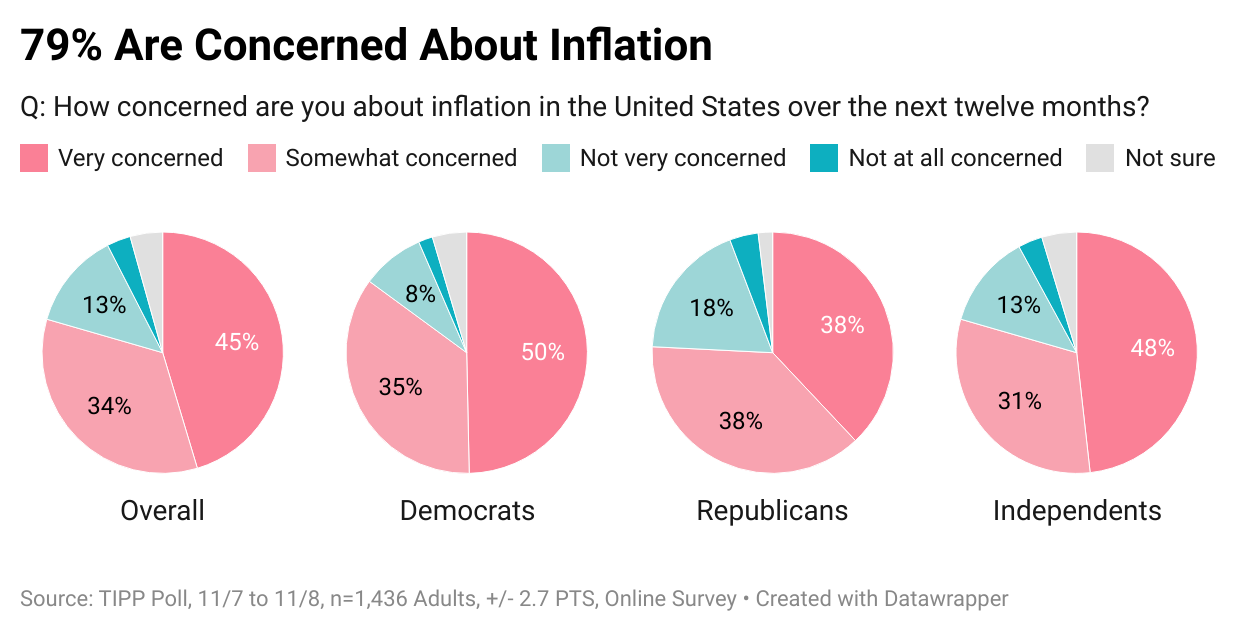
Recession
Four in ten (40%) believe we are in a recession, while 31% think we are not. Another 24% are not sure. The share of Americans who believe we are in a recession has dropped from 45% in August to 40% in November.
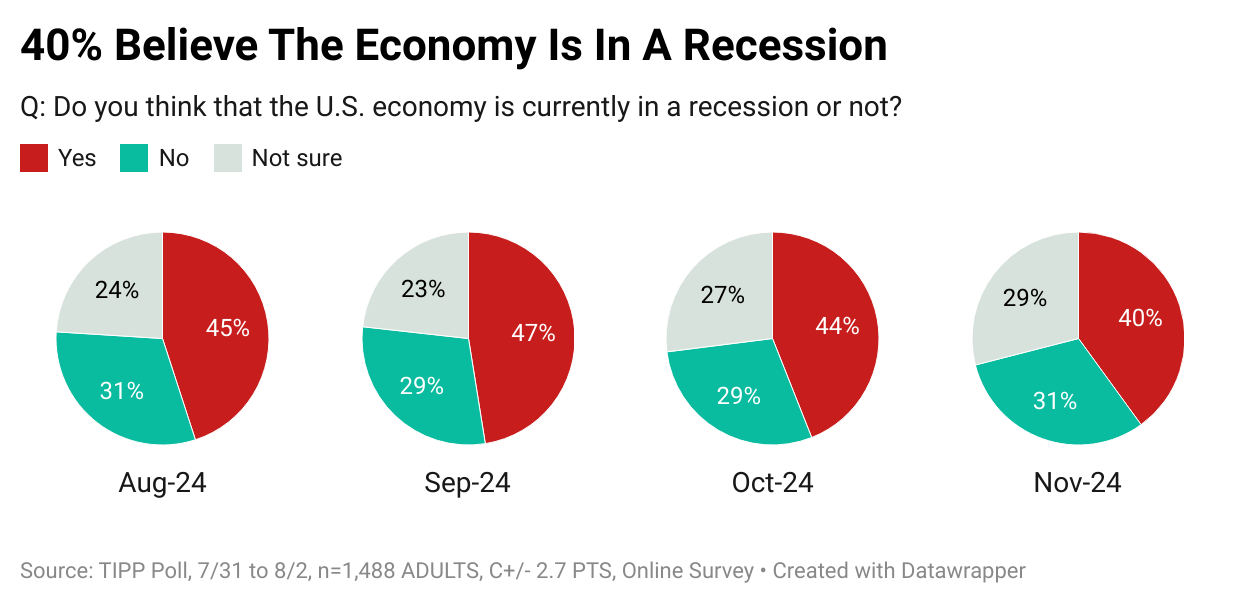
Further, over one-half (56%) think the U.S. economy is not improving, while 27% believe it is improving.
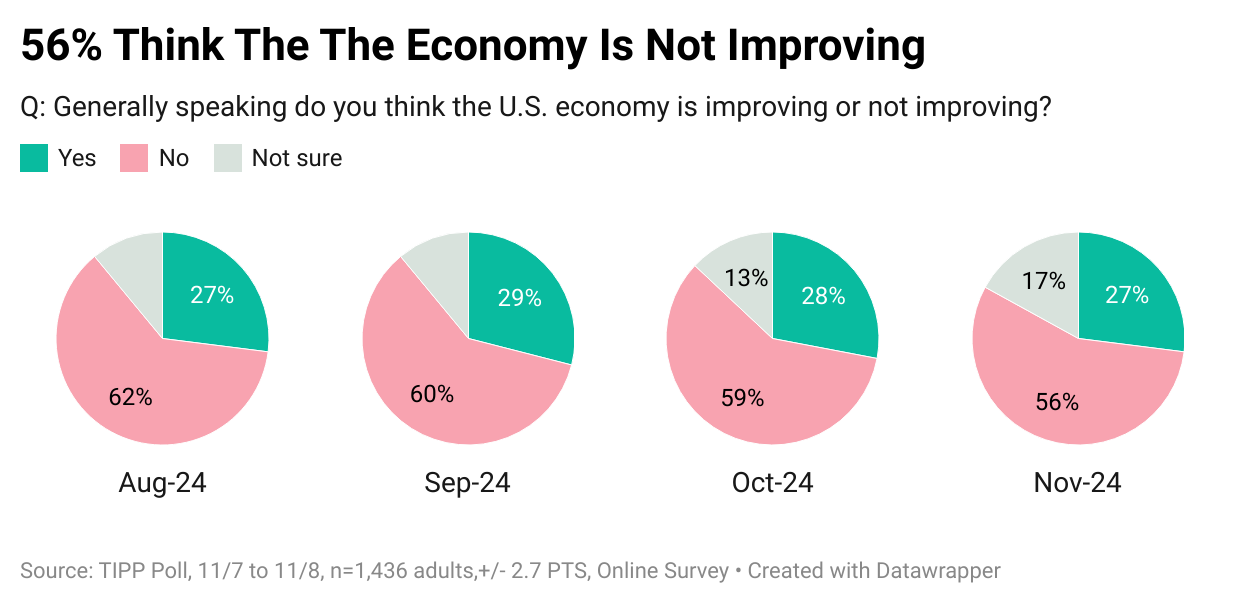
In November, consumer sentiment surged post-election, raising the RealClearMarkets/TIPP Economic Optimism Index to a 39-month high of 53.2. Gains across personal finance outlook and investor confidence reflect a renewed optimism under the new administration. This uptick points to a broader sense of economic hope, especially among independents and non-investors. However, inflation concerns and lingering recession fears add a note of caution to the improving outlook.








